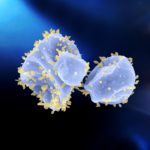Link to Pubmed [PMID] – 28694999
Virus Evol. 2016; 2(1):vew019
Polintons (polintoviruses), polinton-like viruses (PLVs) and virophages belong to a recently described major class of eukaryotic viruses that is characterized by a distinct virion morphogenetic protein module and, in many members, a protein-primed family B DNA polymerase (pDNAP). All Polintons, by definition, encode a pDNAP and a retrovirus-like integrase. Most of the PLV lack these genes and instead encode a large protein containing a superfamily 1 (SF1) helicase domain. We show here that the SF1 helicase domain-containing proteins of the PLV also contain an inactivated pDNAP domain. This unique helicase-pDNAP fusion is also encoded by transpovirons, enigmatic plasmid-like genetic elements that are associated with giant viruses of the family Mimiviridae. These findings indicate the directionality of evolution of different groups of viruses and mobile elements in the Polinton-centered class. We propose that the PLV evolved from a polinton via fusion of the pDNAP gene with a helicase gene that was accompanied by mutations in the pDNAP active site, likely resulting in inactivation of the polymerase activity. The transpovirons could have evolved from PLV via the loss of several genes including those encoding the morphogenetic module proteins. These findings reaffirm the central evolutionary position of the Polintons in the evolution of eukaryotic viruses and other mobile genetic elements.


